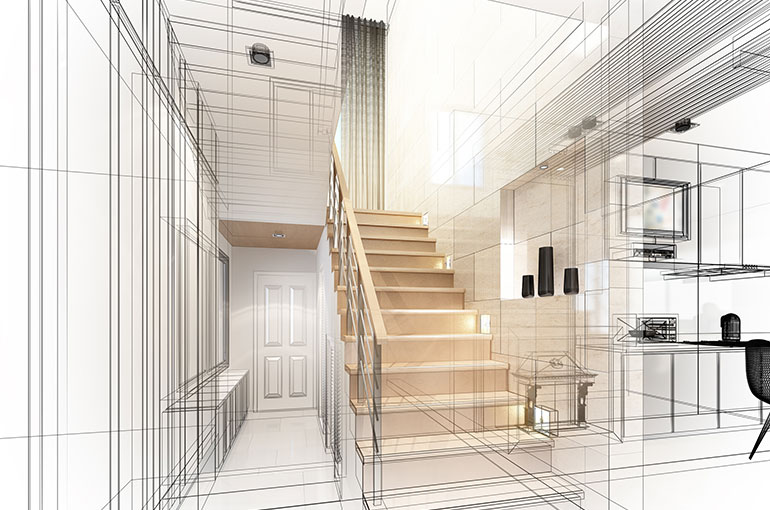Why CDA Architects Are Leaders in Architectural Design and Development
Why CDA Architects Are Leaders in Architectural Design and Development
Blog Article
The Influence of Technical Improvements on the Style Practices of Contemporary Architects
The rapid advancement of technological tools has actually considerably reshaped the design landscape for modern designers, promoting unprecedented degrees of advancement and sustainability. Discovering these dynamics discloses a nuanced interplay in between innovation and typical design methods, prompting a more detailed examination of what the future holds for building techniques.
Advancement of Architectural Equipment
Exactly how have building devices transformed the layout and construction procedures over the centuries? The evolution of architectural tools has actually significantly influenced the performance, precision, and imagination of design and building.
With the arrival of the Renaissance, the intro of the compass and the protractor marked an essential change. These devices allowed architects to achieve higher accuracy in their designs, assisting in the emergence of even more elaborate and proportionate structures. The Industrial Transformation even more reinvented building experiment the introduction of mechanical devices and materials, enabling larger and much more enthusiastic tasks.
In the 20th century, the advancement of computer-aided layout (CAD) software changed the landscape as soon as again, supplying architects with extraordinary abilities in modeling and visualization. Today, advanced tools such as Structure Details Modeling (BIM) and parametric layout software application proceed to press the borders of building technology, making it possible for a more integrated strategy to design and building and construction procedures.
Improved Partnership in Style
As innovation remains to evolve, improved partnership in style has actually become a keystone of modern-day building practice. The assimilation of digital devices such as Building Information Modeling (BIM), cloud-based systems, and progressed visualization software program has changed the method architects, engineers, and stakeholders communicate throughout the layout process. These tools promote real-time communication, allowing teams to share ideas, adjustments, and comments instantaneously, regardless of geographical location.

Furthermore, interdisciplinary collaboration has been streamlined via these technological innovations, making it possible for architects to work extra carefully with various other professionals, such as city organizers and ecological specialists. The result is a much more natural approach to create that considers numerous point of views and knowledge. Ultimately, enhanced collaboration in layout is not just a pattern; it is important for producing innovative, practical, and cosmetically pleasing style in a progressively intricate globe.
Sustainability Via Innovation
Sustainability in architecture has progressively ended up being intertwined with technological advancement, driving the sector toward eco liable methods - cda architects. Contemporary designers are leveraging advanced innovations to lessen ecological effect while improving the efficiency of structures. One prominent example is the use of Building Info Modeling (BIM), which enables accurate preparation and source allocation, reducing waste during building and promoting power effectiveness throughout a building's lifecycle
Additionally, clever products and energy-efficient systems are being integrated into designs to optimize resource use. Technologies such as solar batteries and eco-friendly roofing systems harness sustainable power sources, adding to decreased carbon footprints. Additionally, the application of expert system in design procedures makes it possible for designers to replicate and evaluate energy usage, leading decisions toward even more lasting results.
The integration of lasting modern technologies not only lines up with worldwide environmental objectives however also satisfies a raising demand click this from customers for green remedies. As architects welcome these advancements, the focus shifts in the direction of developing areas that are not only visually pleasing yet likewise functionally sustainable, thus redefining the requirements of modern-day design. This way, modern technology functions as a catalyst for sustainability, allowing designers to develop structures that respect and enhance the natural surroundings.
Difficulties in Implementation
While technological improvements in design look at this now hold great guarantee for enhancing sustainability, their implementation usually encounters considerable difficulties - cda architects. One key obstacle is the high understanding contour connected with new modern technologies. Architects and construction specialists may call for extensive training to successfully utilize advanced software and devices, which can delay project timelines and boost prices
Additionally, the integration of emerging modern technologies, such as Structure Info Modeling (BIM) and lasting products, frequently necessitates collaboration across multidisciplinary groups. This cooperation can be hindered by distinctions in experience, process, and interaction designs, resulting in potential conflicts and inadequacies.
Financial constraints better make complex the fostering of innovative technologies. Lots of architectural firms, especially smaller sized ones, may do not have the resources to purchase advanced tools, limiting their capacity to take on larger companies that can pay for such investments.
Additionally, regulative structures and building codes may not equal technical innovations, developing ambiguity and potential compliance problems. This difficulty can dissuade architects from completely welcoming new modern technologies, as the risk of non-compliance may surpass the benefits. Resolving these execution difficulties is vital for the effective combination of technological improvements in modern building techniques.
Future Trends in Style
The obstacles related to the execution of new innovations in style have actually prompted a reevaluation of future fads within the industry. As engineers browse concerns such as sustainability, urbanization, and social equity, they are increasingly adopting ingenious innovations to boost design performance and environmental performance.
One popular trend is the integration of expert system (AI) in the design process. AI devices can examine huge datasets to inform style decisions, boosting both imagination and performance. Building Details Modeling (BIM) proceeds to check my blog evolve, enabling real-time partnership among stakeholders and assisting in structured task administration.
Lasting layout techniques are likewise gaining energy, with designers concentrating on flexible reuse and regenerative style concepts that lessen source usage and waste. The unification of clever products and sustainable energy sources will further enhance the strength of structures despite environment change.

Verdict
Technical improvements have substantially improved architectural style methods, promoting enhanced accuracy, partnership, and sustainability. The assimilation of devices such as Structure Details Modeling and parametric layout software, along with synthetic intelligence and clever products, encourages designers to attend to intricate difficulties extra properly.
Report this page